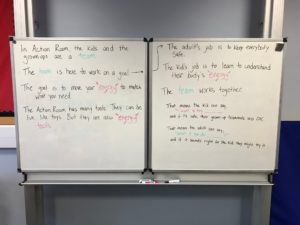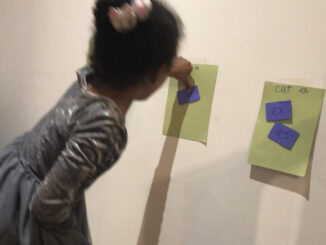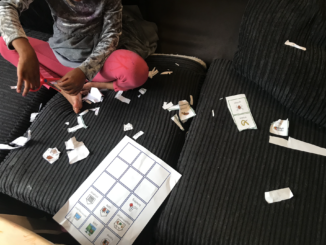
The transcription of the whiteboard can be found at my intro post for this series: What the Therapy Gym Is.
When I set out to write this as a helpful reminder for the adults who take children to use my therapy gym to self-regulate throughout the day, I spent a lot of time thinking about how exactly to summarize in a concise way what the purpose of, well, using a therapy gym to self-regulate actually is.
Is it to take children who are “too wound up” to a place to run around and blow off steam? Not really — that could be the P.E. gym, or just outside on the playground if so.
Also, not all self-regulation is moving from a high-energy state (“too wound up”) to a low-energy state. Some self-regulation is the opposite — raising the state of energy. That’s why I ended up writing that the goal of using the therapy gym is to move your energy to match what you need.
Even this is still a complicated process and a high-level goal. It means that the child, adult, or both need to be able to identify the appropriate energy state for the activity at hand…identify the current energy state of the child…and then figure out what tools would help move the energy from point A to point B.
This is also an intensely personal process, which makes it even more challenging for the adult. Because what works for one kid may not work for another. It takes a lot of observation, explanation, and understanding.
For example, there is a swing in the therapy gym. Rhythmic/regular swinging, in a line back and forth, is often calming to children. But for some children, especially children with vestibular (balance) systems that are less developed or less fine-tuned, this kind of swinging might actually make them feel more alert, as their body tries to respond to sensory input that is challenging for them by “waking up” and becoming on higher alert. So I can’t just say, “If your energy is high and you need it to be lower, go on the swing.” Instead, I have to teach the adults how to work to interpret what the children’s behavior or words are telling them, and teach the children how to interpret what their own body is telling them.



